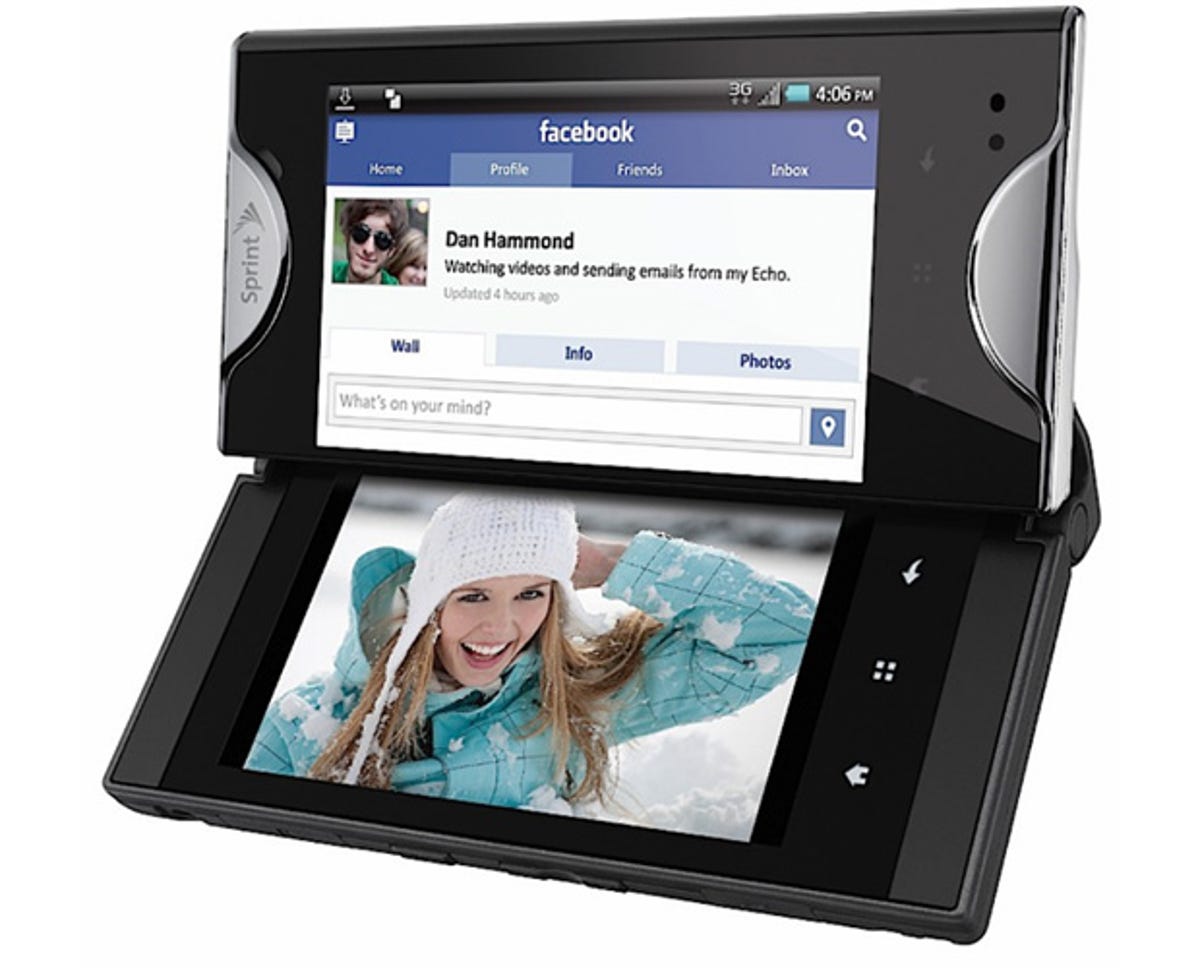
Kyocera’s Echo smart phone has a dual-touchscreen design that makes it one of the most eye-catching Android handsets yet. It’s only going to be available in the US for now, but we suspect Kyocera will be fielding calls from a few UK operators enquiring about the possibility of bringing it across the Atlantic.
Dual-touchscreen? Aye: the Echo comes on a bit like a phone-sized Nintendo DS with twice the tactile goodness. It has two 3.5-inch WVGA displays connected by what Kyocera is calling a ‘pivot hinge’. They can show different apps and/or screens, or work together as a 4.7-inch display. This is just the start of the cleverness.
The Echo can be used in ‘simul-task mode’ with core apps such as email, messaging and Web browsing, meaning you can have two running at once on the two screens. It’s multi-tasking in the sense of having several windows open on a desktop PC, rather than the background-running and fast-switching of what we understand as mobile multi-tasking.
Apps can also be designed to run in ‘optimised mode’ across both screens — more shades of DS here — such as browsing image thumbnails on one screen while tapping to see bigger versions fill the second display.
Kyocera is also preloading a nifty app called VueQue, which involves watching a YouTube video on one screen while browsing and cueing up others on the second screen. Well, Queing, we guess. Apps can also run in ‘tablet mode’ across both displays.
It’s worth noting that developers will have to convert their apps to use these dual-screen modes. Kyocera and its network partner Sprint are providing an SDK to help, but the Echo will need to sell well to persuade developers it’s worth the effort.
The Echo’s other specs include using the Android 2.2 Froyo software, which feels like a strange decision given the availability of 2.3 and last night’s rumours of 2.4. Early purchasers will be hoping for a speedy update.
The device also has a 5-megapixel camera, can shoot HD video at 720p resolution, packs a 1GHz Snapdragon processor and comes with 1GB of internal memory, plus an 8GB microSD card. We’re intrigued by Kyocera’s decision to include a spare battery in the box too.
It sounds like great value for money, but also makes us wonder just how juice-sapping those two touchscreens are, and whether the extra battery is an admission that the Echo will struggle to get through the day on a single charge.
As we said, the Kyocera Echo is US-only for now, and we don’t know what the terms of Kyocera’s deal with Sprint are when it comes to selling the phone elsewhere in the world. Its US release will be a good test of whether the dual-screen form factor will fly, not to mention whether developers will rush to support its innovative display modes.
If it takes off, expect to see the Echo — or devices like it — in the UK sooner rather than later.



